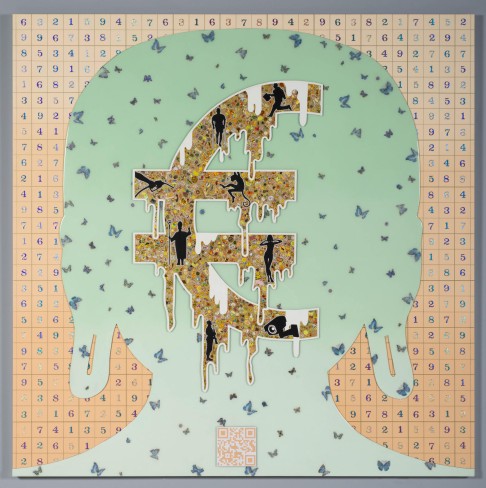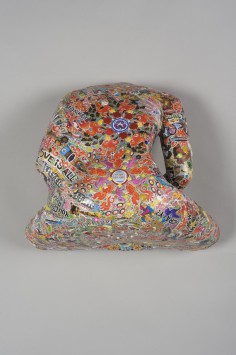Tibetan artist Gonkar Gyatso fuses pop culture with Buddhist iconography
Pop Phraseology Pearl Lam Galleries

in 1961, Gonkar Gyatso's earliest memories of drawing were of the Chinese propaganda images he was tasked with creating at school.
"We didn't have art classes, but I was quite good at drawing, so the teachers made me do a new one on the blackboard each week," recalls the artist. "It was always drawings of heroes, Mao's portrait, or sunflowers. I got quite sick of it so I've always been very deliberate about not making my work propaganda for just one viewpoint. I want it to be more playful and easier for people to look at."
But it would be wrong to view Gyatso's works as decorative musings. His artistic trademark is to use cheap and glossy plastic stickers to create, or cover, serene traditional Buddha figures. The resulting psychedelic collages belie a thoughtful study of what society considers "traditional", and also examine the cultural identity crises that globalisation causes.

"Pop Phraseology" is a new series of works that artist created for his solo show at Pearl Lam Galleries, and it stands out for its timely investigation of the language of popular culture. For example, reflects on the mainland government's use of social media in their high-profile crackdown on corporate corruption. The work was inspired by a recent stay in Chengdu, where Gyatso says he noticed how powerful social networks were as a means of modern communication.
"Everyone there uses words that have a double meaning, and they all know exactly what it really means," he explains. "For some people, it is about avoiding censorship. But even the Chinese government creates new phrases to make their message popular. I found that amazing."

The latter reflects the artist's impression of modern China. "Everything is very glossy and shiny, but it's glossy in a different way. A 'British shiny', for example, is very different to how it's done in China."
